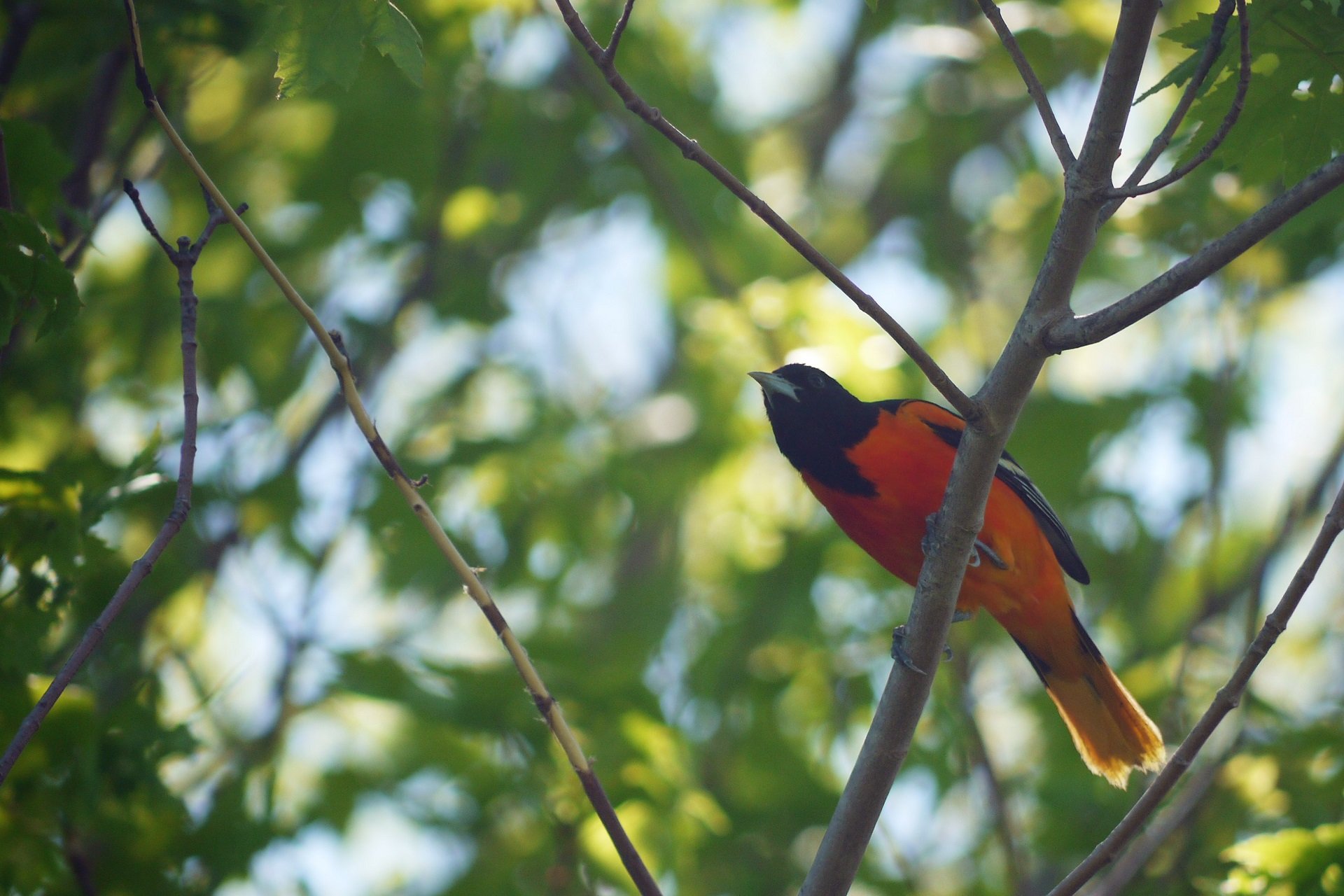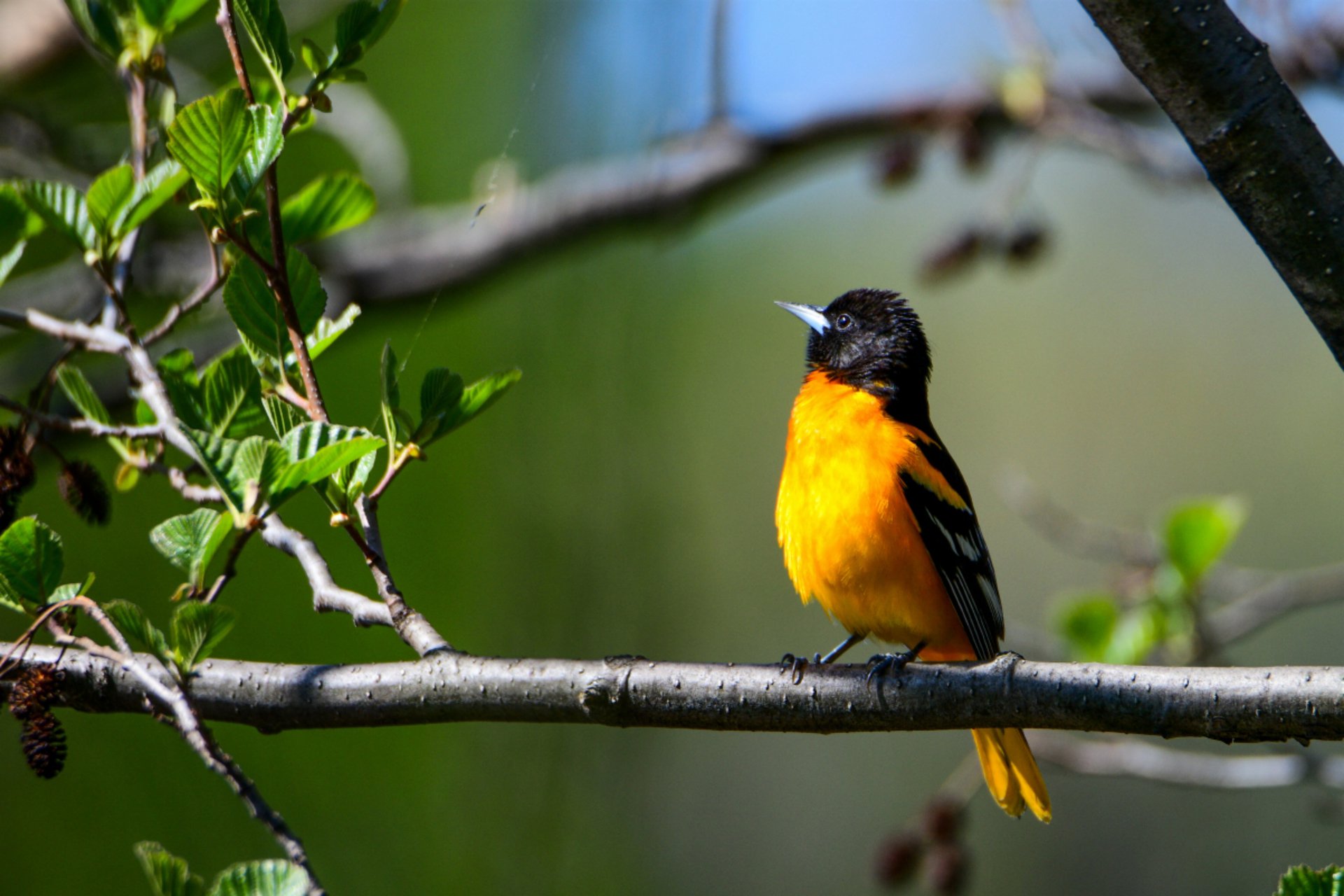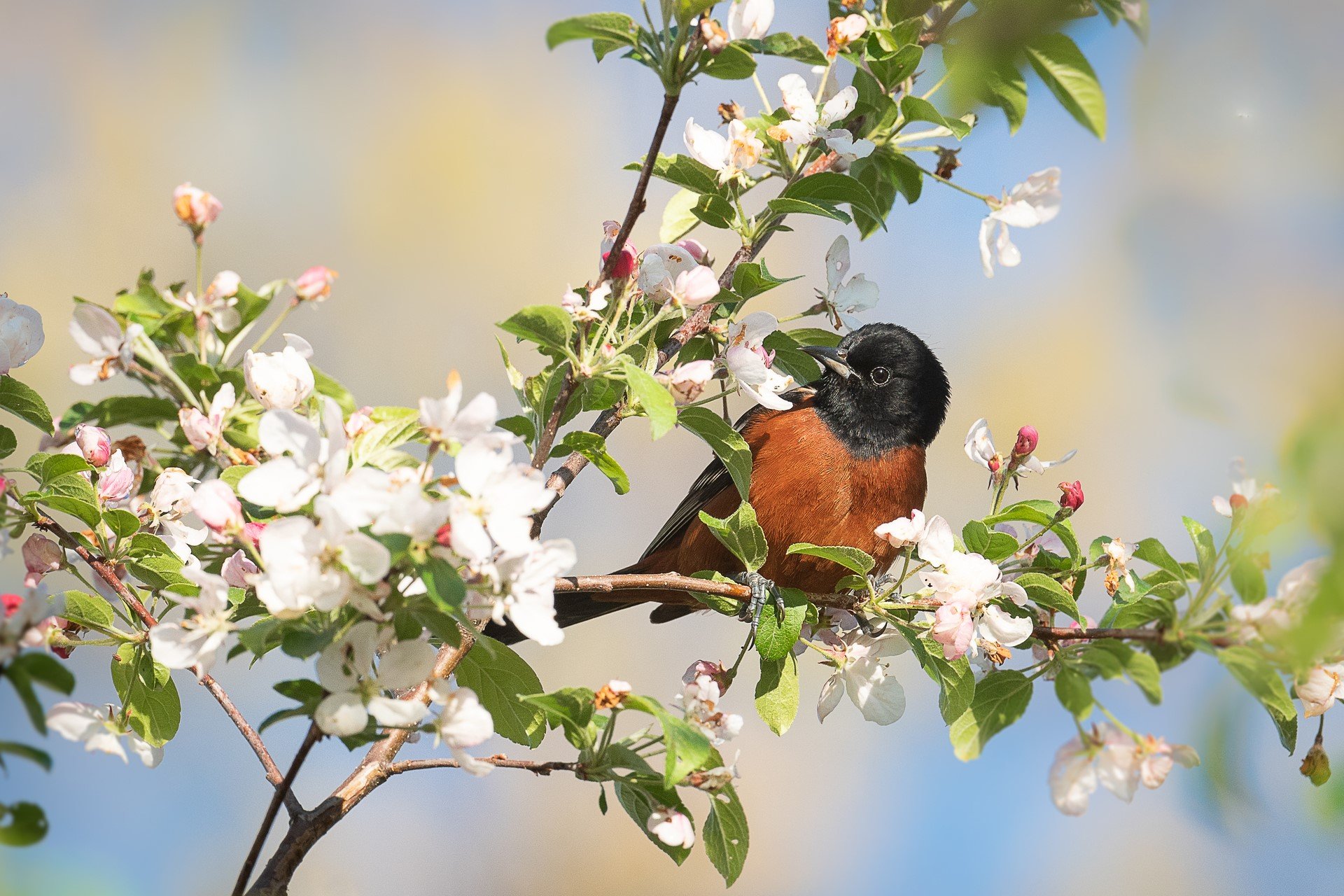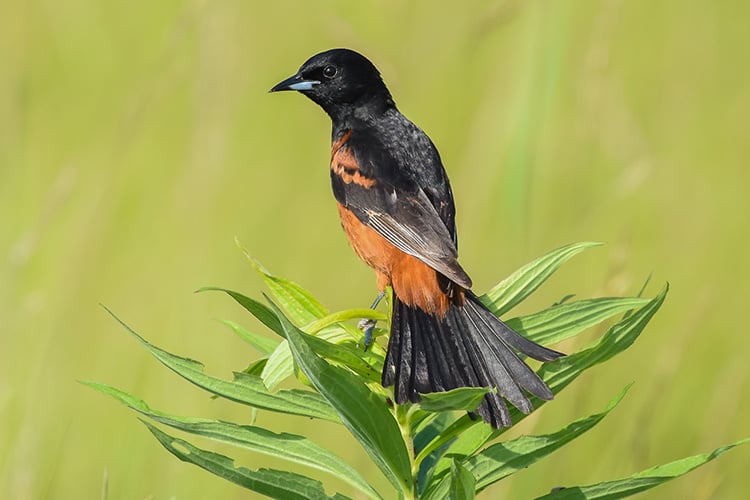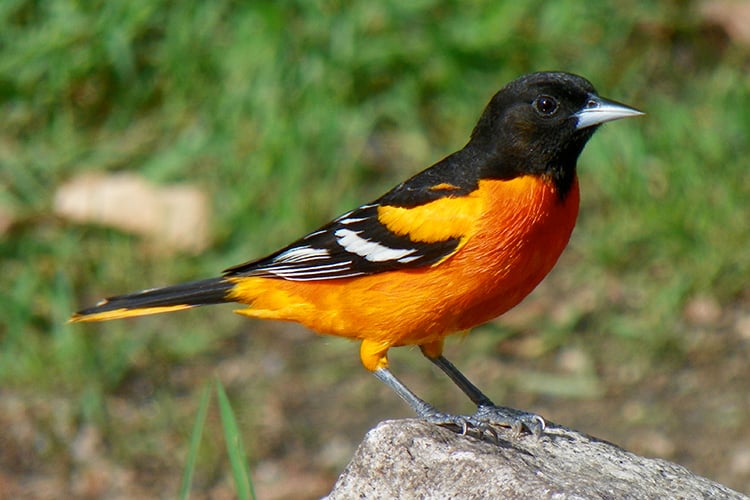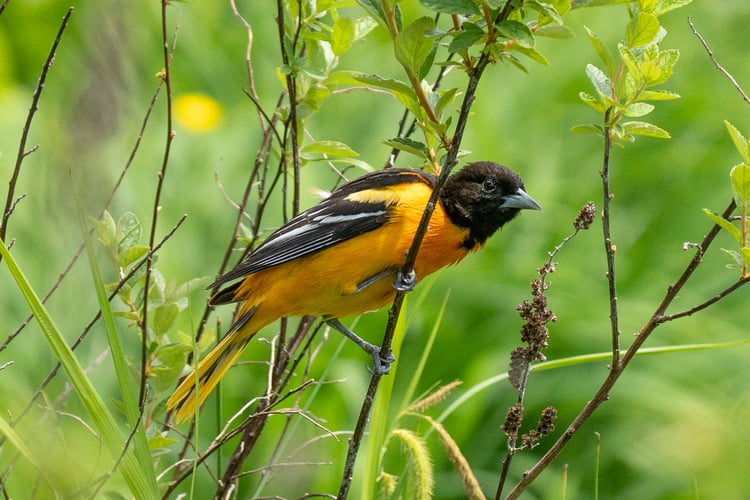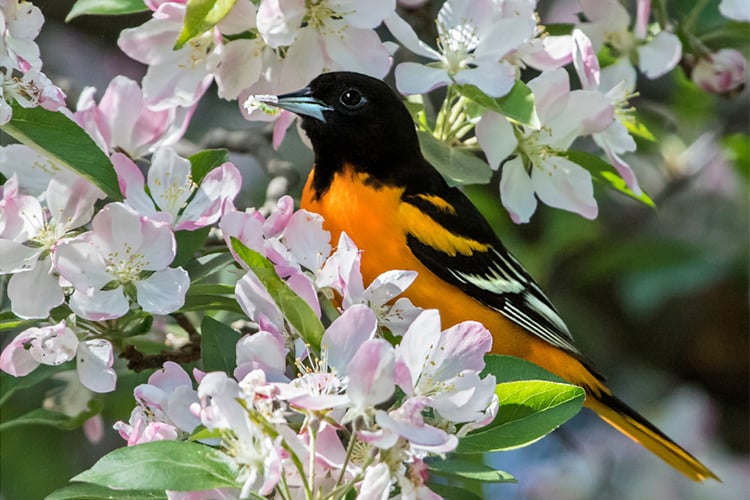Birds in Massachusetts
Baltimore & Orchard Orioles
Orioles are colorful, vocal members of the blackbird family. In Massachusetts they are represented by two species—the Baltimore Oriole and the Orchard Oriole.
The bold patterning of black and yellow-orange sported by male Baltimore Orioles reminded early observers of the black and gold heraldry of Lord Baltimore—hence the species' common name.
These vibrant birds may visit a backyard or park near you during the warmer months of the year.
How to Identify Orioles
Orchard Orioles vs Baltimore Orioles
Baltimore Orioles are slightly smaller than American Robins—just under 9" from bill to tail tip. Males have black heads, backs, and wings but show the characteristic bright orange below (and on) their tails.
Females and young Baltimore Orioles are typically quite a bit more drab about their head. They may show pale orange, yellow, or even simply tan below. Both sexes have strong white wing-bars on dark wings, as well as the sharp, pointed bills typical of the blackbird family.
The less-common Orchard Oriole is smaller than its more famous cousin. Instead of bright orange, male Orchard Orioles are highlighted with a deep brownish-red.
Oriole Behavior
What Do Orioles Eat?
Baltimore Orioles love fruit and can sometimes be enticed to visit backyard feeders by fresh fruit or berries.
Where Do Orioles Live?
Baltimore Orioles build unique hanging nests in mature trees near parks, yards, farm fields, or other open areas—you will seldom encounter a Baltimore Oriole in the depths of the forest. Orchard Orioles favor young woods (or orchards!) at the forest's edge and are less commonly encountered in yards or parks.
Like most blackbirds, orioles in our area usually fly south for the winter, but a few birds may survive the winter in Massachusetts when the weather is not too severe and fruit is available.
What Do Orioles Sound Like?
The song of the male Baltimore Oriole is a loud caroling, somewhat reminiscent of robin's song but with harsh call notes interspersed throughout.
Baltimore Oriole Song & Call
Orchard Oriole Song
Threats Facing Orioles
Baltimore Orioles are still common and widespread during the warmer months in Massachusetts, but Mass Audubon's Breeding Bird Atlas survey numbers indicate that this species may be undergoing a quiet decline. Likewise, the numbers of winter orioles reported by the Christmas Bird Count have been declining for several years.
By contrast, Orchard Orioles are uncommonly encountered, but they are becoming more abundant and widespread in Massachusetts. This is especially true in the eastern part of the state and the Connecticut River Valley.
We do not yet fully understand the root cause of these trends, however human development and climate change have contributed to changing bird populations in Massachusetts.
How Mass Audubon is Supporting Birds in Massachusetts
Mass Audubon works at our wildlife sanctuaries and beyond to ensure that the nature of Massachusetts continues to thrive. By scientifically monitoring Massachusetts birdlife, Mass Audubon informs important conservation decisions and launches targeted initiatives to help at-risk species. In addition, fostering healthy habitats, supporting native species, and educating people about the importance of nature conservation is critical to our success. Learn more about our work
How You Can Support Birds in Massachusetts
Mass Audubon supports birds like the Baltimore Oriole and Orchard Oriole every day, but we couldn’t do it without the support of our 160,000+ members.
Help us support orioles, and birds like them, by becoming a member today.
Upcoming Bird Programs
See MoreFriday Morning Birdwatching - Cape Ann
-
Cape Ann, Rockport
-
Friday, December 19
8:30-11:30am
Adults
Birding 101
-
Moose Hill Wildlife Sanctuary, Sharon
-
Friday, December 19
9:30-11:00am
Adults
Birds Beyond Identification - Owls
-
North River Wildlife Sanctuary, Marshfield
-
Friday, December 19
10:00am-12:00pm
Adults
Stay Connected
Don't miss a beat on all the ways you can get outdoors, celebrate nature, and get involved.



